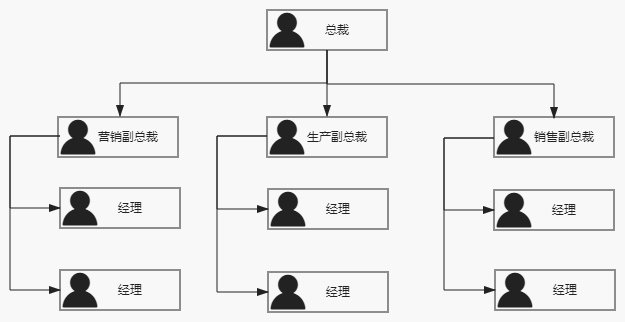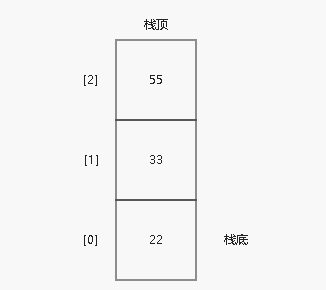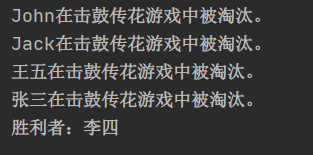8.4 自平衡树
BST树会存在一个问题:取决于你添加的节点数,树的一条边可能会非常深;也就是说树的一条分支会有很多层,而其它却有几层,如下图所示
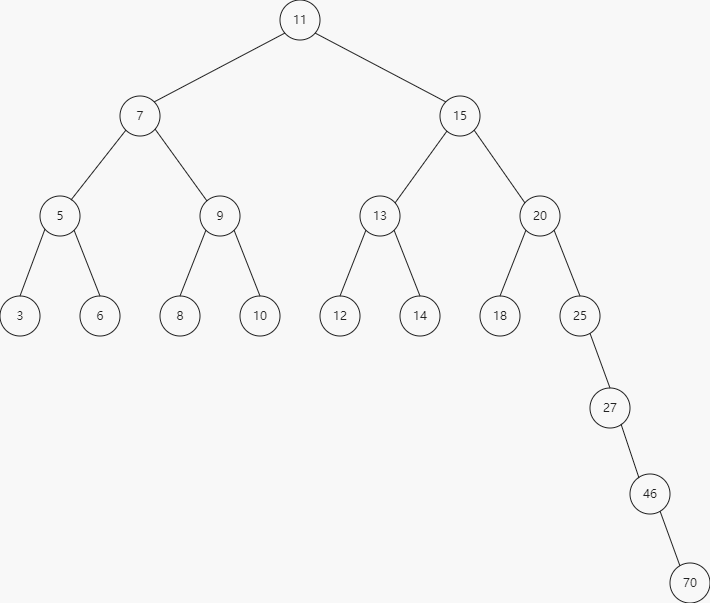
这会在需要的某条边上添加、移除和搜索某个节点时引起一些性能问题。为了解决这个问题,我们需要去平衡它的高度。
8.4.1 自平衡树-AVL树
AVL树是一种自平衡树。添加或移除节点时,AVL树会尝试保持自平衡,任意一个节点(不论深度)的左子树和右子树高度最多相差1.添加或移除节点时,AVL树会尽可能尝试转换为完全树。
我们开始创建AVLTree类:
1
2
3
4
5
6
| export default class AVLTree extends BinarySearchTree {
constructor() {
super();
this.root = null;
}
}
|
AVL树也是一个BST,我们继承BinarySearchTree类,只需要重写insert、insertNode和removeNode方法。
在AVL树中插入或移除节点和BST完全相同。然而,AVL树的不同之处在于我们需要检验它的平衡因子,如果需要,会将其逻辑应用于树的自平衡。
1. 节点的高度和平衡因子
我们知道,节点的高度是从节点到其任意子节点的边的最大值。如图所示:
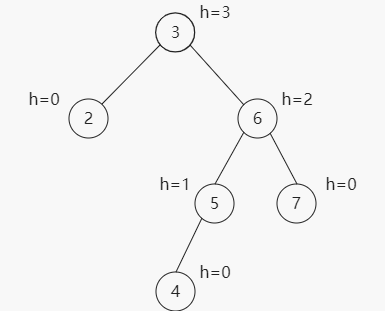
所以我们需要一个计算节点高度的方法:
1
2
3
4
5
6
| getNodeDeep(node) {
if (node == null) {
return -1;
}
return Math.max(this.getNodeDeep(node.left), this.getNodeDeep(node.right)) + 1;
}
|
结点的平衡因子 = 左子树的高度 - 右子树的高度
插入和删除操作都会导致AVL树的自我调整(自我平衡),使得所有结点的平衡因子保持为+1、-1或0。
当子树的根结点的平衡因子为+1时,它是左倾斜的(left-heavy)。
当子树的根结点的平衡因子为 -1时,它是右倾斜的(right-heavy)。
一颗子树的根结点的平衡因子就代表该子树的平衡性。
计算一个节点的平衡因子方法:
1
2
3
4
5
6
7
8
9
10
11
12
13
14
15
16
17
18
19
20
21
22
| const BalanceFactor = {
UNBALANCED_RIGHT: 1,
SLIGHTLY_UNBALANCED_RIGHT: 2,
BALANCED: 3,
SLIGHTLY_UNBALANCED_LEFT: 4,
UNBALANCED_LEFT: 5
}
getBalanceFactor(node) {
const heightDifference = this.getNodeDeep(node.left) - this.getNodeDeep(node.right);
switch (heightDifference) {
case -2:
return BalanceFactor.UNBALANCED_RIGHT;
case -1:
return BalanceFactor.SLIGHTLY_UNBALANCED_RIGHT;
case 1:
return BalanceFactor.SLIGHTLY_UNBALANCED_LEFT;
case 2:
return BalanceFactor.UNBALANCED_LEFT;
default:
return BalanceFactor.BALANCED;
}
}
|
保持所有子树几乎都处于平衡状态,AVL树在总体上就能够基本保持平衡。
2.平衡操作-AVL旋转
在对AVL树进行添加或移除节点后,我们要计算节点的高度平验证树是否需要旋转。分为四种场景:
- 左-左(LL):向右的单旋转
- 右右(RR):向左的单旋转
- 左-右(LR):向右的双旋转(先LL旋转,再RR旋转)
- 右-左(RL):向左的双旋转(先RR旋转,再LL旋转)
2.1 左-左(LL):向右的单旋转
如下图所示,当x位于A的左子树的左子树上时,执行LL旋转。
设left为A的左子树,要执行LL旋转,将A的左指针指向left的右子结点,left的右指针指向A,将原来指向A的指针指向left。
旋转过后,将A和left的平衡因子都改为0。所有其他结点的平衡因子没有发生变化。
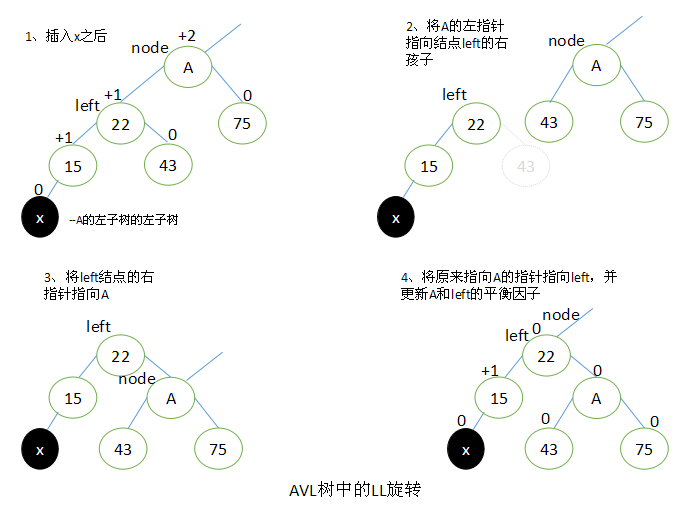
下面代码举例说明了整个过程:
1
2
3
4
5
6
| rotationLL(node) {
const tmp = node.left;
node.left = tmp.right;
tmp.right = node;
return tmp;
}
|
2.2 右右(RR):向左的单旋转
当x位于A的左子树的右子树上时,执行RR旋转。
RR旋转与LL旋转是对称的关系。
设A的右子结点为Right。要执行RR旋转,将A的右指针指向right的左子结点,right的左指针指向A,原来指向A的指针修改为指向right。
完成旋转以后,将A和left的平衡因子都修改为0。所有其他结点的平衡因子都没有改变。
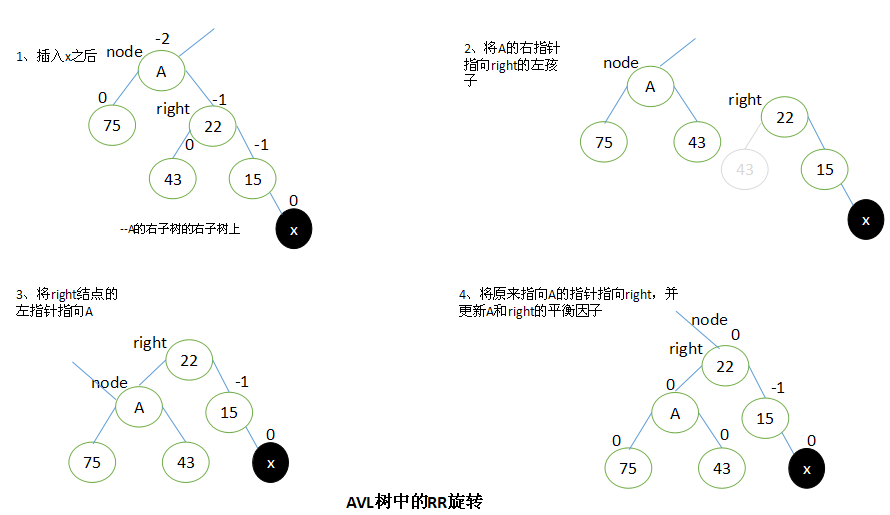
下面代码列举了整个过程:
1
2
3
4
5
6
| rotationRR(node) {
const tmp = node.right;
node.right = tmp.left;
tmp.left = node;
return tmp;
}
|
2.3 左-右(LR):向右的双旋转(先LL旋转,再RR旋转)
当x位于A的左子树的右子树上时,执行LR旋转。
设left是A的左子结点,并设A的子孙结点grandchild为left的右子结点。
要执行LR旋转,将left的右子结点指向grandchild的左子结点,grandchild的左子结点指向left,A的左子结点指向grandchild的右子结点,再将grandchild的右子结点指向A,最后将原来指向A的指针指向grandchild。
执行LR旋转之后,调整结点的平衡因子取决于旋转前grandchild结点的原平衡因子值。
如果grandchild结点的原始平衡因子为+1,就将A的平衡因子设为-1,将left的平衡因子设为0。
如果grandchild结点的原始平衡因子为0,就将A和left的平衡因子都设置为0。
如果grandchild结点的原始平衡因子为-1,就将A的平衡因子设置为0,将left的平衡因子设置为+1。
在所有的情况下,grandchild的新平衡因子都是0。所有其他结点的平衡因子都没有改变。
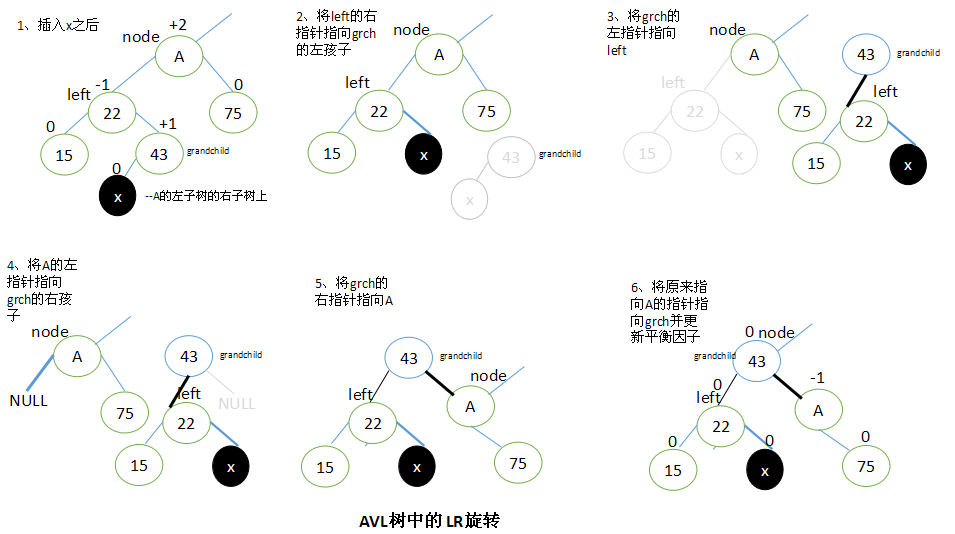
下面代码说明了整个过程:
1
2
3
4
| rotationLR(node) {
node.left = this.rotationRR(node.left);
return this.rotationLL(node);
}
|
2.4 右-左(RL):向左的双旋转(先RR旋转,再LL旋转)
当x位于A的右子树的左子树上时,执行RL旋转。
RL旋转与LR旋转是对称的关系。
设A的右子结点为right,right的左子结点为grandchild。要执行RL旋转,将right结点的左子结点指向grandchild的右子结点,将grandchild的右子结点指向right,将A的右子结点指向grandchild的左子结点,将grandchild的左子结点指向A,最后将原来指向A的指针指向grandchild。
执行RL旋转以后,调整结点的平衡因子取决于旋转前grandchild结点的原平衡因子。这里也有三种情况需要考虑:
如果grandchild的原始平衡因子值为+1,将A的平衡因子更新为0,right的更新为-1;
如果grandchild的原始平衡因子值为 0,将A和right的平衡因子都更新为0;
如果grandchild的原始平衡因子值为-1,将A的平衡因子更新为+1,right的更新为0;
在所有情况中,都将grandchild的新平衡因子设置为0。所有其他结点的平衡因子不发生改变。
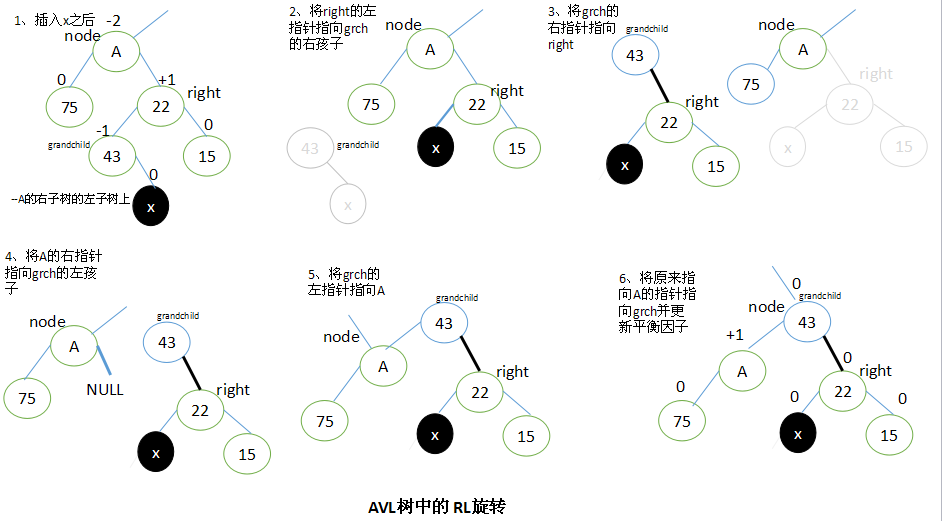
下面代码说明了整个过程:
1
2
3
4
| rotationRL(node) {
node.right = this.rotationLL(node.right);
return this.rotationRR(node);
}
|
3. 向AVL树插入节点
1
2
3
4
5
6
7
8
9
10
11
12
13
14
15
16
17
18
19
20
21
22
23
24
25
26
27
28
29
30
31
32
| insert(value) {
this.root = this.insertNode(this.root, value);
}
insertNode(node, value) {
if (node == null) {
return new Node(value)
} else if (value < node.value) {
node.left = this.insertNode(node.left, value);
} else if (value > node.value) {
node.right = this.insertNode(node.right, value);
} else {
return node;
}
let balanceFactor = this.getBalanceFactor(node);
if (balanceFactor === BalanceFactor.UNBALANCED_LEFT) {
if (value < node.left.value) {
node = this.rotationLL(node);
} else {
node = this.rotationLR(node);
}
}
if (balanceFactor === BalanceFactor.UNBALANCED_RIGHT) {
if (value > node.right.value) {
node = this.rotationRR(node);
} else {
node = this.rotationRL(node);
}
}
return node;
}
|
4. 从AVL树移除节点
1
2
3
4
5
6
7
8
9
10
11
12
13
14
15
16
17
18
19
20
21
22
23
24
25
26
27
28
29
30
31
| removeNode(node, value) {
node = super.removeNode(node, value);
if (node == null) {
return node;
}
const balanceFactor = this.getBalanceFactor(node);
if (balanceFactor === BalanceFactor.UNBALANCED_LEFT) {
if (
this.getBalanceFactor(node.left) === BalanceFactor.BALANCED ||
this.getBalanceFactor(node.left) === BalanceFactor.SLIGHTLY_UNBALANCED_LEFT
) {
return this.rotationLL(node);
}
if (this.getBalanceFactor(node.left) === BalanceFactor.SLIGHTLY_UNBALANCED_RIGHT) {
return this.rotationLR(node.left);
}
}
if (balanceFactor === BalanceFactor.UNBALANCED_RIGHT) {
if (
this.getBalanceFactor(node.right) === BalanceFactor.BALANCED ||
this.getBalanceFactor(node.right) === BalanceFactor.SLIGHTLY_UNBALANCED_RIGHT
) {
return this.rotationRR(node);
}
if (this.getBalanceFactor(node.right) === BalanceFactor.SLIGHTLY_UNBALANCED_LEFT) {
return this.rotationRL(node.right);
}
}
return node;
}
|







